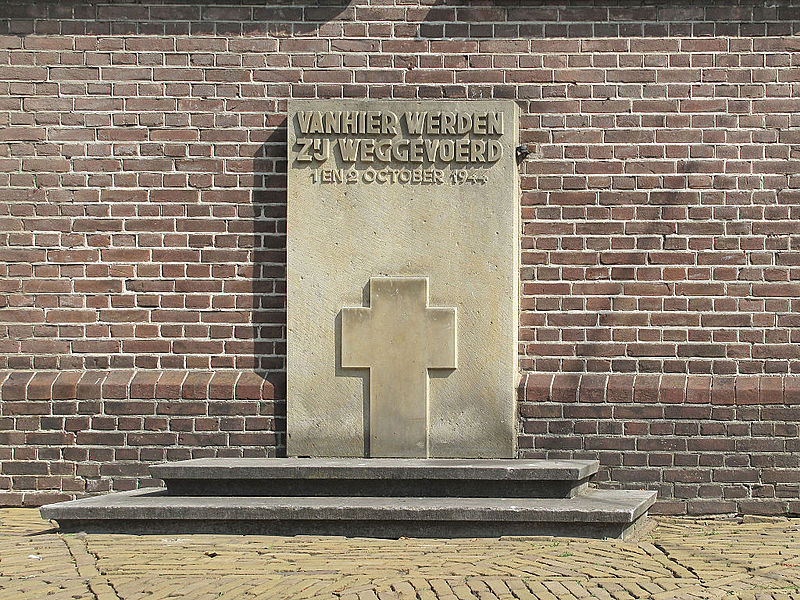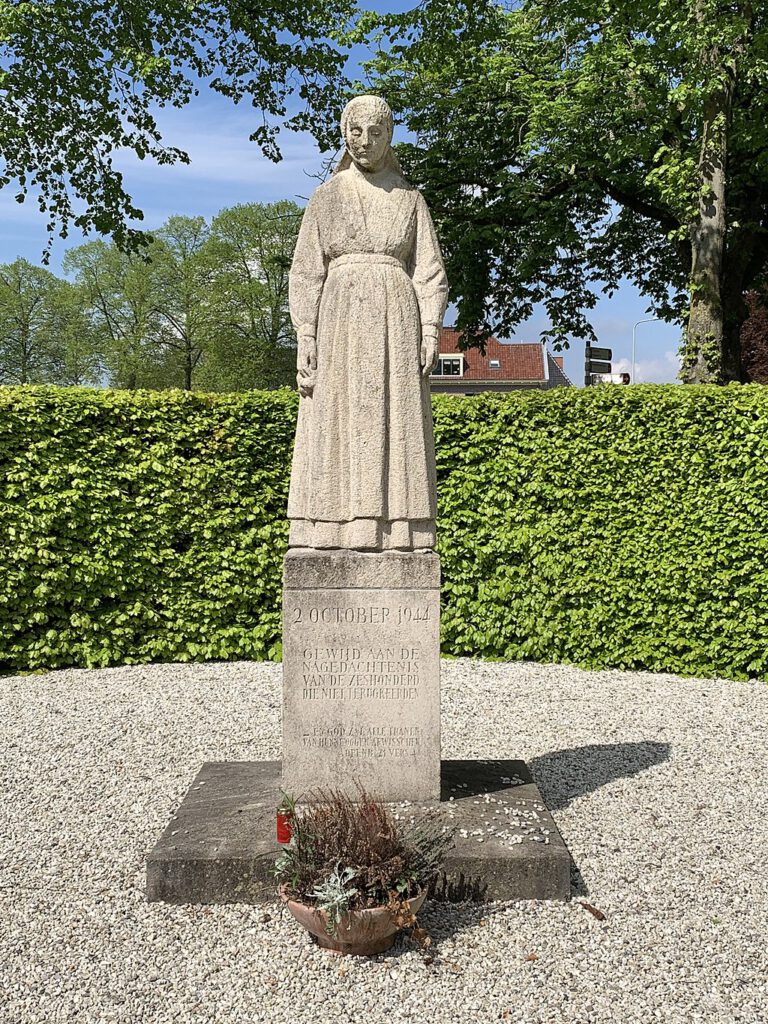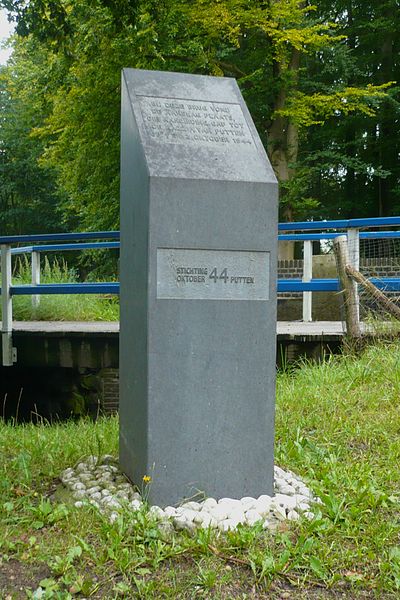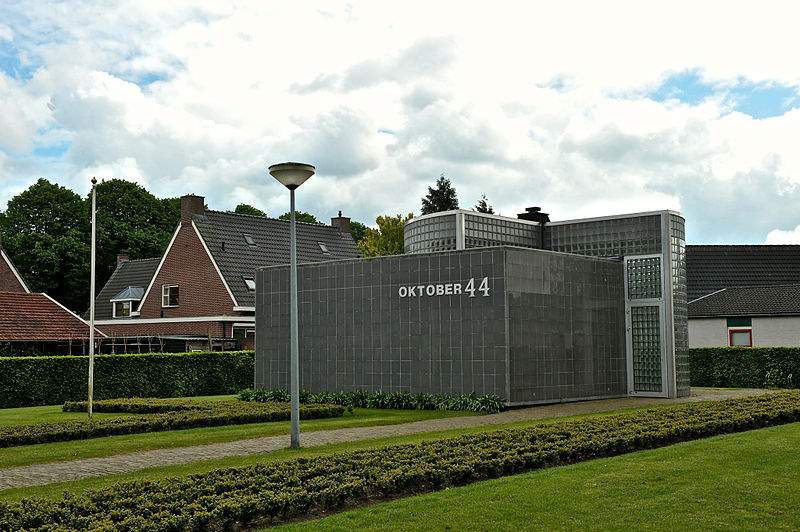On October 1, the small village of Putten in Gelderland remembers a painful day from its past. Every year, on October 2, this dark day in Dutch history is brought to the mind of locals.
On the first day of October 1944, almost all the working men from the village (659 of them) were taken and sent to concentration camps by Nazi troops. Only 48 of them returned alive to their home in Putten.
Why did Nazi troops raid the village of Putten?
Nothing can ever be reason enough to do what Nazi officers did in Putten — or anywhere else. Fuelled with hate and cruelty, the Nazis were retaliating against the people of the village because members of the Dutch resistance orchestrated an attack against them.
The attack happened the night of September 30 to October 1, 1944, when a car carrying two Nazi officers (Leutnant Otto Sommer and Oberleutnant Eggart) and two corporals was shot at on the Oldenaller bridge. The corporals got away. Eggart was captured by the resistance fighters but was later let go. Sommer also managed to get away but succumbed to injuries the next day. However, that was only after he’d had a chance to raise the alarm.
Friedrich Christiansen, the Captain-at-Sea, gave the command, and the troops marched to the village. They separated the men from their families, and any man between the ages of 18 and 50 was sent to the concentration camp at Amersfoort. There, they released 59 men from the group who were unfit for work.
The others were taken as forced labour to the Neuengamme concentration camp. In transit, 13 men jumped off the train while they were being transported there. After the war ended, only 48 of them returned home to Putten.
Remembering the Putten raid victims
If you visit present-day Putten, you can take a tour of the various sites that commemorate those lost in the raid. Here are the most important monuments and memorial sites which make sure the Netherlands never forgets what this small town went through.
The silent commemoration
Every year, the city takes on a sombre overtone, with shops closing down earlier than usual. Hundreds of people come together in front of the “Het Vrouwtje van Putten” statue and lay down wreaths for their men.
During the silent commemoration, there are no speeches expressing sadness and no words of comfort for the families who lost someone. Instead, they sing Psalm 84, the same psalm the men were singing when they were taken away.
‘Het Vrouwtje van Putten’ statue and memorial garden
Also known as “the Little Woman of Putten”, the statue was built by Mari Andriessen to signify the pain and loss the families felt when all the men were rounded up in the village’s square.
She is positioned so that she’s looking in the direction of Oude Kerk (Old Church), the place from where they were taken. She wears a traditional dress and holds a handkerchief.
There’s also a memorial garden in front of her. The hedges are grown so that they make 660 memorial graves — one for each of the men who were forcefully taken from the village.
Memorial stone at Oude Kerk
While the men were held separately in the primary school near the village square, the women and children of Putten were held in Oude Kerk.
When they realised that it was getting overcrowded in the school, the women and children were sent home, and some of the men were kept in the church. This is also where the Little Woman of Putten is looking, as it marks the spot from where the men were taken.
A memorial stone was erected in 1947 at the church that reads: “From here they were taken”.

Memorial monument Poorterbrug
A monument was also erected to remind residents and visitors of the place where the attack occurred on the Oldenaller Bridge. It’s at Waterweg, 3882 RR, Putten, for anyone who wants to come and pay their respects to the people lost to the raid.
The text on the monument reads: “Near this bridge, the attack took place that led to the raid of Putten on the 1st and the 2nd of October, 1944”.
Memorial Centre
In addition, there’s a memorial centre run by Foundation October ’44 in the centre of the town. Here, you can learn all about the raid, the details of what happened that night, and the aftermath. They also organise a silent commemoration every year.
You can learn the names of the men lost during the raid, and the foundation has done an excellent job of maintaining easily accessible documentation of each of them on its website.
READ MORE | “Mother of 1001 children”: the resistance heroine who saved thousands from the Nazis
Why is it so important to maintain this information online when archiving? We have easily accessible information about the Nazis who gave the command. We even have some information about the Dutch resistance fighters who carried out the attack.
Overall, 659 men were taken, 59 were let go, 13 escaped, and only 48 returned. The pain and suffering of their deaths cannot possibly be summed up with just those mere numbers.
What about 25-year-old Drees Alten, who was arrested along with his soon-to-be father-in-law, Marinus Simon, despite trying to hide from Nazi troops in a garden?
Or 41-year-old Willem Frederik Joseph Hendrik Adolfs, who was a painter and made a self-portrait at Camp Amersfoort? Learning their personal stories is an important part of keeping their memory alive.
Did you already know about the raid of Putten? Have you been to any of the memorials? Tell us in the comments below!
Feature Image: HenkvD/Wikimedia Commons/CC4.0
Editor’s Note: This article was originally published in October 2019 and was fully updated in October 2023 for your reading pleasure.









As far as I know they where not all NAZIS
Using the word Germans would be more appropiate in my opinion.
The German military, known as the Wehrmacht participated happily in all kind of Nazi war crimes which also includes the Holocaust.